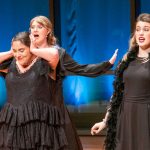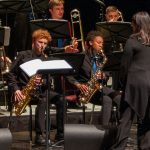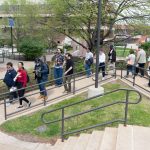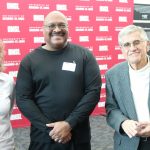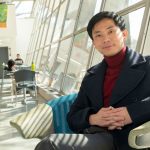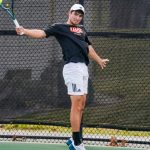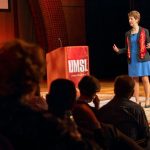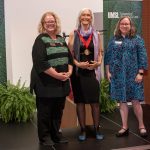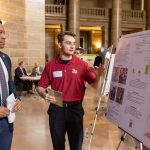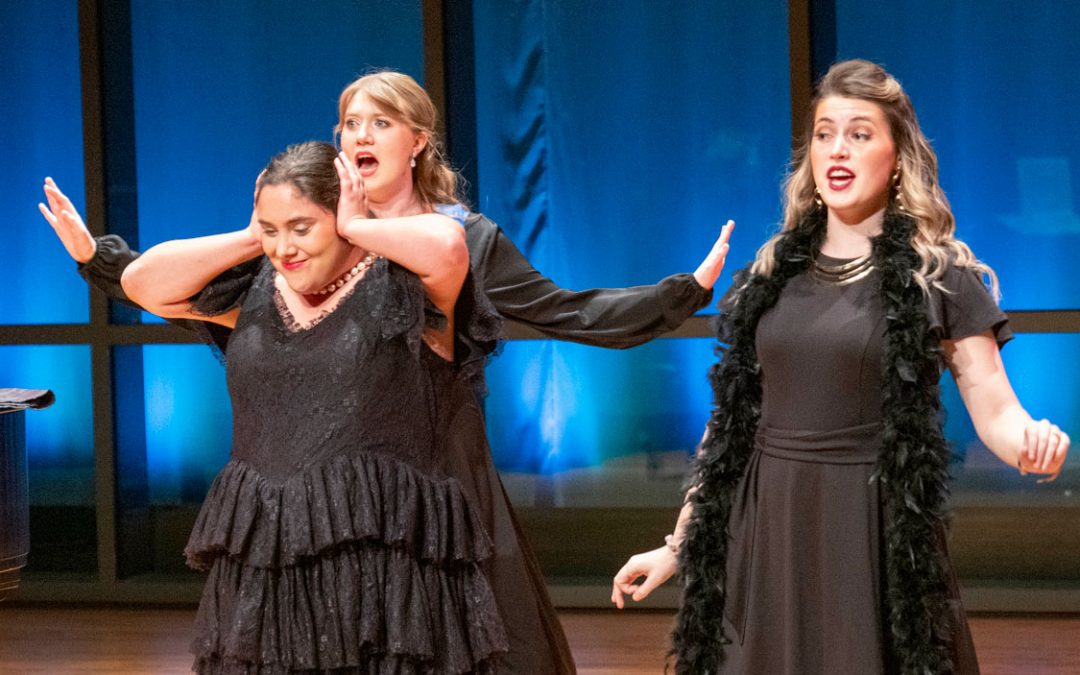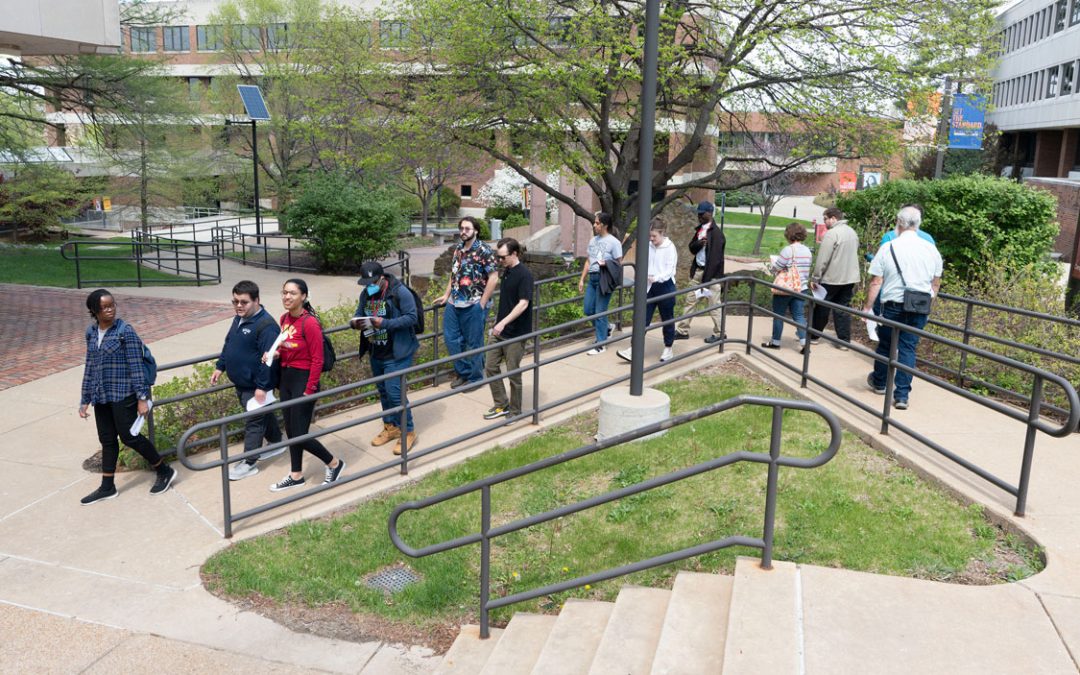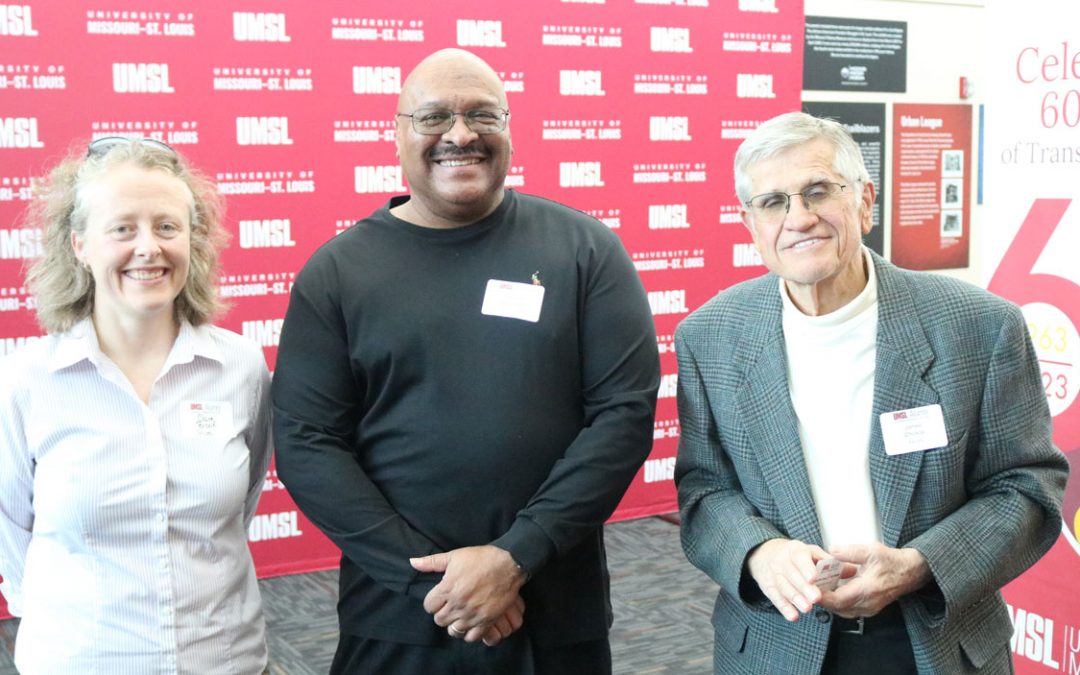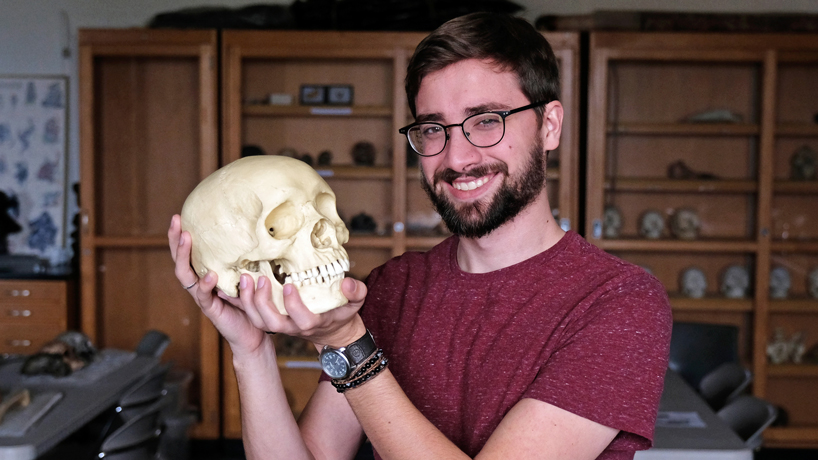
Shawn Edghill already had a degree in urban planning and design when he decided to return to school to pursue a second bachelor’s in anthropology. The new UMSL graduate spent much of his final semester researching teeth from people who died during the mid-1800s. He now is considering applying to graduate school. (Photo by August Jennewein)
Shawn Edghill is still weighing what to do next now that he’s completed his bachelor’s degree in anthropology from the University of Missouri–St. Louis.
But the knowledge he’s gained of the past over the last year and a half could wind up serving him well in several different fields he might choose to enter.
“It would be nice to get a PhD in anthropology,” he said during a meeting at the Millennium Student Center late in the fall semester. “In the end, I would love to be able to be a professor. I love the ability to do research and be able to talk to students to enlighten people.”
It’s far from the only route open to him.
“Anthropology is just as much a tool as it is a profession,” he said. “It can be utilized by any other profession that works with humans to allow a better understanding of the people you’re working with. So I’ve been thinking about epidemiology, looking at epidemics in populations and looking at disparities in communities and how they can be affected by what happens if an epidemic occurs.”
He also mentioned forensics as an area of knowledge he might tap into after taking a course in forensic anthropology as part of his focus on biological anthropology.
Edghill’s degree came with distinction after he acquired valuable research experience this semester working alongside junior Kathleen Rice. Together, they studied the teeth of people who were part of a migrant population that died in St. Louis during a cholera epidemic just over a decade before the Civil War.
He and Rice have co-written a thesis based on their research and have plans to present their work in the spring.
Anne Austin, a teaching professor of anthropology in her first semester at UMSL, has overseen the project.
“He’s been tenacious,” Austin said of Edghill’s work. “He’s really focused on getting the data, so he’s collected information on over 1,000 teeth – I think it’s about 1,400 teeth. I’ve had them do everything from start to finish. They have collected all the information they need.”
That’s meant noting where people have caries – or cavities – as well as examining wear patterns and what they might suggest about an individual’s health.
Their study has been focused on people who lived during an often-overlooked period in American history – between the settlement of the new frontier and the start of the Industrial Revolution. The information gleaned can prove valuable when compared to research on different populations from different periods of time. It also can offer lessons for today.
“It’s interesting to think about issues like immigration and race, gender and age – how do all of these play into who ends up being healthy and who isn’t?” Austin said. “Who gets care and who doesn’t? If we can look and they can figure out what trends we see in St. Louis 200 years ago, it would be great to understand are those trends the same trends we’ve had for the past 200 years? If that’s the case, maybe that means that our solutions for health care will have to be solutions to these bigger issues that seem to have been around for centuries.”
Edghill has long been interested in exploring history and what it might reveal.
He had an interest in archaeology that can be traced to his time at Marquette High School, if not before. But he steered away from that during a first stint in college out of concerns, reinforced by family members, about the difficulty finding a job.
He met with an adviser at St. Louis Community College–Meramec and began brainstorming other pursuits.
“She was like, ‘Maybe you should try out urban planning and design because you seem to have a design focus,’” Edghill said. “I said, ‘You know what? Sure.’”
He wound up making that his major after transferring to the University of Missouri–Kansas City to continue his studies.
He graduated from UMKC in the spring of 2015 and promptly began an internship with the city of Chesterfield, Missouri, that turned into a full-time position as a planning technician.
The job had him reviewing plans and business applications and answering questions from would-be developers. But he wasn’t finding it fulfilling.
“I still very much love urban planning,” he said. “It’s just I also want to be able to take knowledge of history and make sure that it’s at the forefront of what I do as well.”
By the winter of 2016, he began thinking he needed to make a change and finally wound up meeting Associate Professor Patti Wright – the chair of the Department of Anthropology – while attending a UMSL Day event that March.
“She gave me her whole spiel, and I decided to join,” he said.
He intended to focus on archaeology but discovered a fascination with biological anthropology while taking several courses with Professor Sarah Lacy, a dental paleoanthropologist.
Edghill spent the summer in Sondor, Peru, researching osteology and excavating centuries-old human remains of Inca and Chanka people along with 16 other students at an Institute for Field Research field school. Specifically, they were looking at cranial deformation and also trepanation, a crude surgical procedure that involves forming a hole in the skull of a living person, often to relieve pressure caused by trauma.
“It allowed me to kind of brush up on my osteology, and it really helped me remember that when you’re handling human remains, you have to be relativistic about it,” he said. “You have to really understand that you treat everything that you’re handling with the utmost respect.”
Lacy left UMSL earlier this year to take a position as an assistant professor at California State University Dominguez Hills, but Austin took her place and has served as a mentor in Edghill’s final semester.
In addition to his research project, he also served as teaching assistant in her Introduction to Cultural Anthropology course.
She’s tried to provide guidance as he considers his next move.
“I’ve worked with him on what it would look like to apply to graduate schools and doing informational interviews in other directions,” Austin said. “With him graduating now, I’ve also been helping him with finding what career opportunities there are regionally this time of year since most graduate programs don’t start until September. So we’ve been working together on all of these issues to see what his choices are and options are moving forward.”



